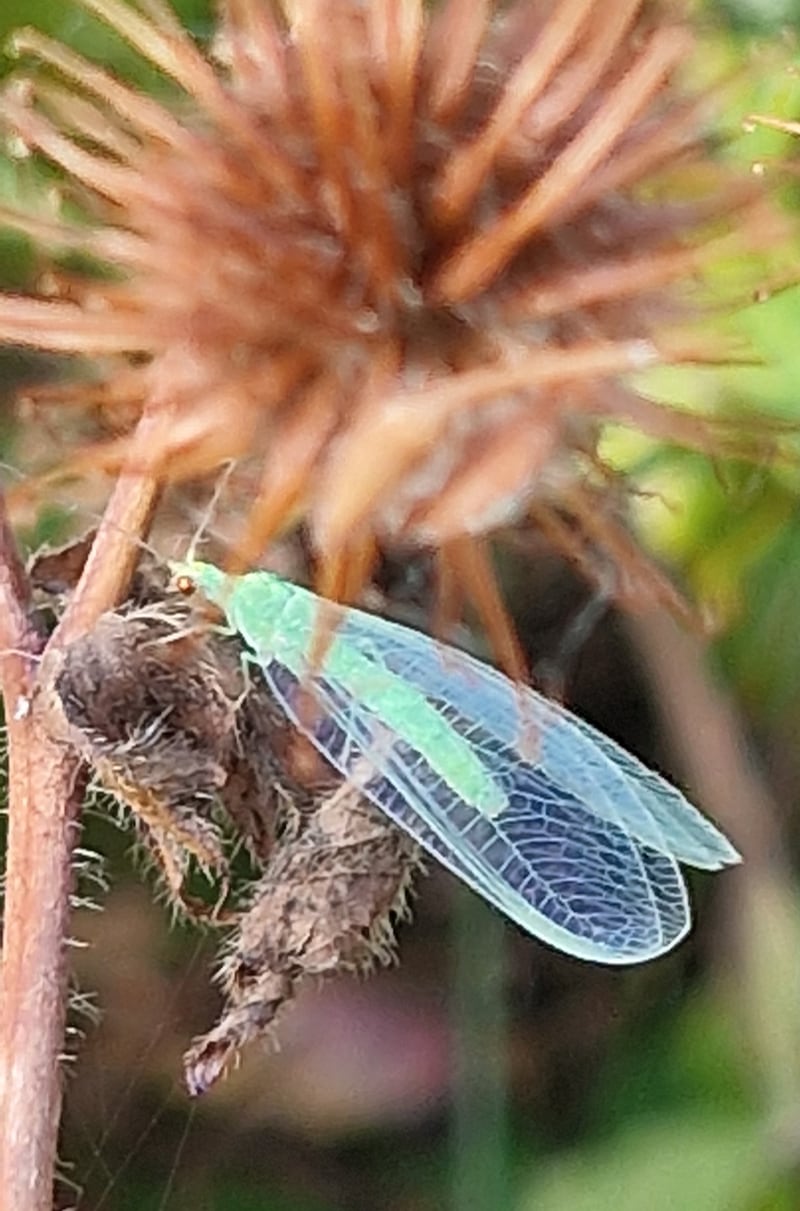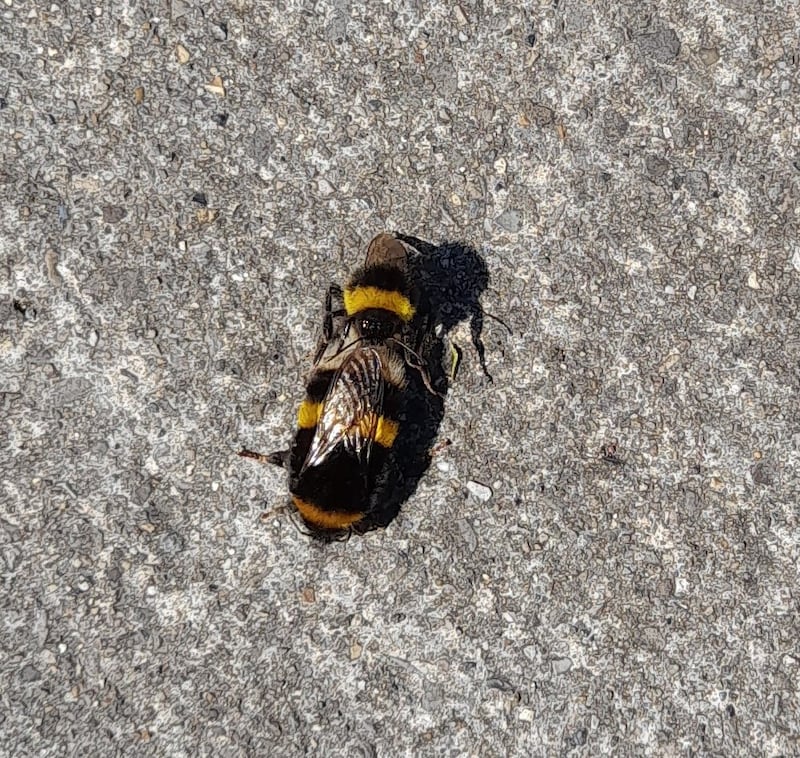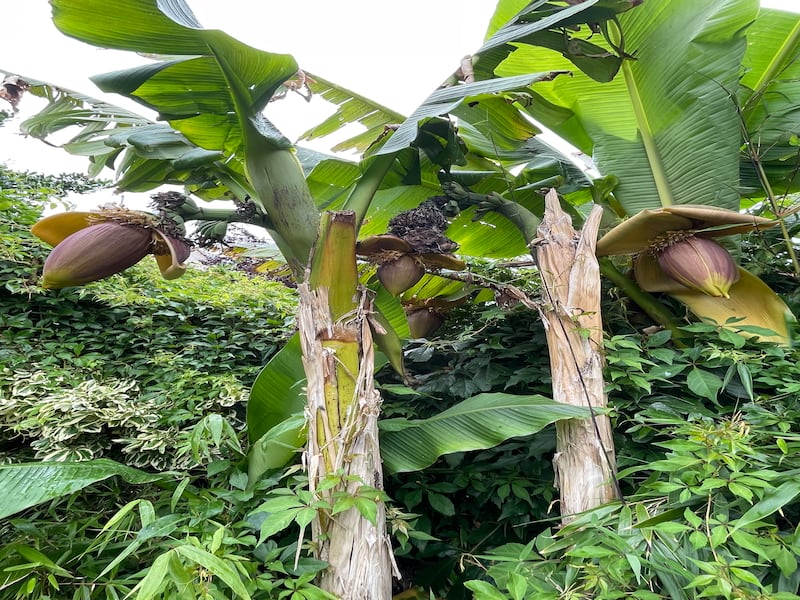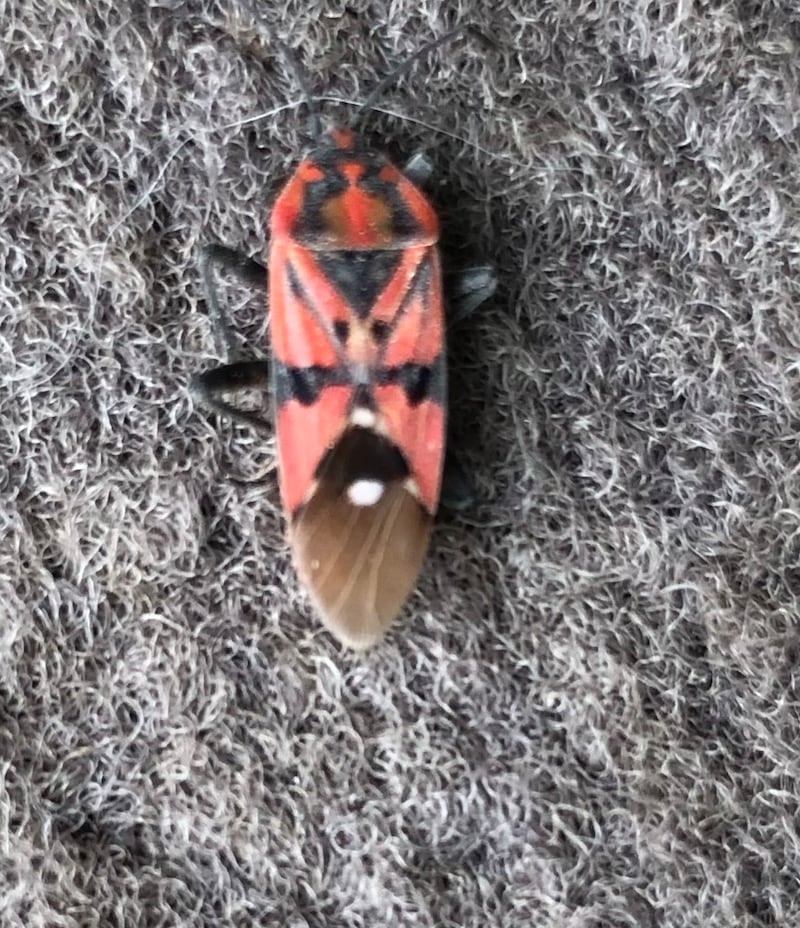We saw this butterfly on a leaf in our garden. It stayed still long enough to get a close-up photo. Its wings are a really nice colour and have marks like paint splashes. Luke (10) and Cillian (7) O’Kane
You did indeed get an excellent photo, in focus, of a holly blue butterfly with its wings closed. The wings have bright blue uppersides, and those of the female have pronounced black tips. Both sexes have similar blue-grey undersides with black spots, or paint splashes as you so poetically describe them. We get two generations of these in Ireland. The summer one, which you have here, lays eggs on ivy. These eggs hatch out into caterpillars, feed on the ivy flowers and overwinter as chrysalises. When they emerge as adults in April, the females will lay their eggs on holly after mating. They are a common garden species in built-up areas.

I found this beauty in the kitchen and relocated her to the garden. I have never seen such beauty before in a small insect; I believe it is a common lacewing and very beneficial for the garden. Denis Cody, Wicklow
Beauty and usefulness are not mutually exclusive. We have several species of green lacewings in Ireland. Their larvae are insatiable predators, feeding on – inter alia – aphids, caterpillars, mealybugs, whiteflies and scale insects. They often cover themselves with the sucked-out empty skins of their victims. The beautiful adults are not insect predators but beneficial pollinators that feed on plant pollen, nectar and sticky honeydew. One of the commonest is Chrysopa carnea, which often enters buildings in autumn and overwinters as an adult.
RM Block

I came across these bees on the footpath. The large one seemed dead or stunned, the smaller (at his head) seemed very agitated and appeared to be trying to revive or move the larger bee. What was going on? Michael Gavin, Dublin
This is an action shot of what used to be coyly described as “the birds and the bees”. These are mating white-tailed bumblebees. The larger one is the queen and the smaller one at the rear is the male or drone. Hopefully they weren’t too carried away and got off the footpath safely afterwards.

My musa banana plants are beginning to show bulb-like growths, which I assume are bananas. Are they going to be bananas, and is this normal at our latitude? Emmet Murphy, Dublin
Bananas is right with the colder than normal summer we have had. The Japanese banana (Musa basjoo) can grow outdoors in Irish gardens, produce large, lush leaves and even, as in your case, the bud-like flowers. However, the fruit only develops in a warm conservatory or a particularly well-sheltered south-facing spot in a west Cork garden during a warmer than usual summer. It is happy until temperatures drop below 10 degrees, but the roots will survive and send up new shoots the following spring.

Can you identify this insect, which I recently found in a pack of grapes? Frances McEntee, Co Meath
This is Lygaeus equestris, a seed bug that has a continental European distribution, but is not an Irish species. It eats the fruit of vincetoxicum, a climbing vine that grows in southern Europe. But it will also dine on elderberries and fruits of other woody plants. Hopefully you destroyed it so as not to inadvertently release something that might become invasive here. Some species of seed bugs have become pests in Europe following accidental introduction from the US. We do have other species of seed bugs here, but none of them are serious plant pests.
Please submit your nature query, observation, or photo, with a location, via irishtimes.com/eyeonnature or by email to weekend@irishtimes.com




















